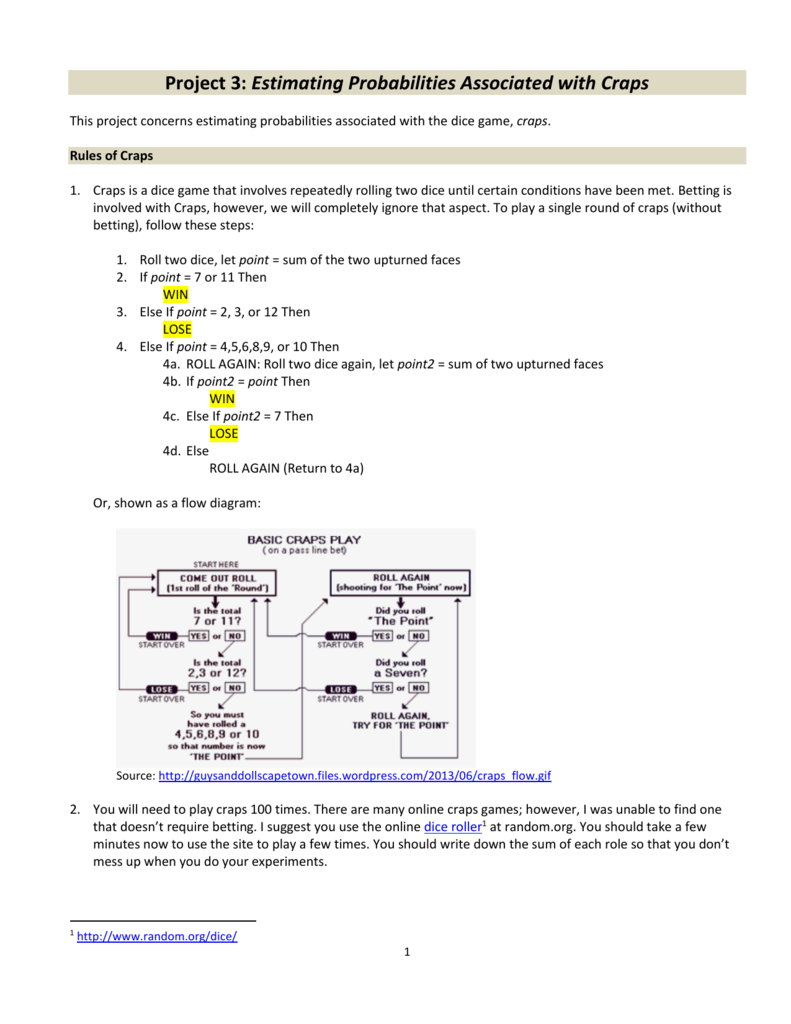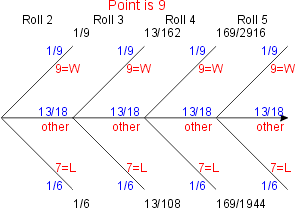Craps Probability Distribution
The odds of rolling no 3's 50 times in a row is just that probability raised to the 50th power. It works out to around 57 times per 1000 games (here, the syntax 2^20 means 2 raised to the 20th power). (1-2/36)^50=0.057 Conceptually, the 3 and the 11 go together, since they occur with the same odds. The total probability of complementary events is exactly 1, so the probability here is: P(X ≤ 26) = 1 - 0.02 = 0.98. When to use dice probability calculator? There are a lot of board games where you take turns to roll a die (or dice), and the results may be used in numerous contexts. Craps come-out roll probabilities The following table provides the probability mass function for the sum of the two dice if we believe the probability of each elementary outcome is equal: Outcome 2 3 4 5 6 7 8 9 10 11 12 Sum Combinations 1 2 3 4 5 6 5 4 3 2 1 36 Probability1 36 2 36 3 36 4 36 5 36 6 36 36 36 36 36 361. Abstract The probability distribution ofthe sum of two fair dice is used to calculate the house advantage of various bets in craps, and is readily available in probability and statistics books and gaming literature. You can use probability to figure out the odds of winning and losing in the popular casino dice game of craps. In the game of craps, on your first roll (called the come out roll), three outcomes are possible: Natural: Rolling a total of 7 or 11 — automatically wins. Craps: Rolling a total of 2, 3, or 12 — automatically loses.
Description
A Monte Carlo simulation of the dice game 'craps'.Returns a point estimate of the probability of winning craps using fair dice.

Usage

Arguments
nrep | number of replications (plays of a single game of craps) |
seed | initial seed to the random number generator (NA uses current state of random number generator; NULL seeds using system clock) |
showProgress | if TRUE, displays a progress bar on screen during execution |
Details

Implements a Monte Carlo simulation of the dice game craps played with fairdice.A single play of the game proceeds as follows:
Two fair dice are rolled. If the sum is 7 or 11, the player winsimmediately; if the sum is 2, 3, or 12, the player loses immediately.Otherwise the sum becomes the point.
The two dice continue to be rolled until either a sum of 7 is rolled(in which case the player loses) or a sum equal to the point isrolled (in which case the player wins).
The simulation involves nrep replications of the game.
Craps Probability Distribution
Note: When the value of nrep is large, the function will executenoticeably faster when showProgress is set to FALSE.
Value
Point estimate of the probability of winning at craps (a real-valued scalar).
Author(s)
Barry Lawson (blawson@richmond.edu),Larry Leemis (leemis@math.wm.edu)